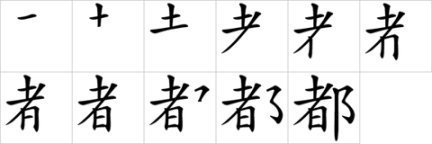What Is the Most Effective Way to Learn Chinese Characters?

Chinese is distinctive for its characters. When people think of China, they think of thousands upon thousands of symbols, normally amazed that people can memorize so many different icons for their language. For some it’s the characters that make them want to learn Chinese, and for others the characters put them off. Here are some tips:
Flashcards:
This is a classic way to learn, and it’s pretty self-explanatory. Just buy some flashcards, write a character on one side, and write the meaning and pronunciation (in Pinyin) on the other. If you want to be fancy, you can try an application called Anki. Anki bills itself as an intelligent flashcard system, and it’s hard to argue it isn’t. It learns your needs as your learn each card, removing cards that you’ve already memorized, and reintroducing them in timed intervals to make sure you don’t forget them. Anki is available on Mac, PC, Android and iOS.
Organize:
So in order to be able to read Chinese, you’ll need to know around 3,000 characters. That’s a lot. The best way to tackle them is to do it in chunks. Start with the most commonly used characters, and then work your way up to the top. Consider breaking down the characters into groups of 15 or 20. Study those each day. If you’re like most students you’ll find that you forget the characters, and that’s okay. You don’t need to add more, just keep going at it until you feel comfortable with the previous set.
Writing:
It might be hard to stomach, but the truth is that writing characters will help you memorize them. It’s really important that you grab a notepad and get to writing. Repetition will build visual and muscle memory. If you notice you’re having trouble memorizing a certain character with flashcards, writing it repeatedly (a lot of times!) will likely help you commit it to memory.
Chinese characters are often classified according to their radicals, so we had to learn radicals because we needed to read and write. There are 214 radicals. These are usually sorted by the number of strokes. For example, 一 comes before 二. Actually, these radicals have different values, so Mandarin teachers would teach radicals sequentially. Radicals are common components, located on the top, bottom, left, right, or outer part of characters, which usually indicate the class of meaning to which a character belongs. For example, “好 (hǎo)”, “妈 (mā)”, “姐 (jiě)”, and “妹 (mèi)” are grouped under the radical “女 (nǚ)”, which is the common component on the left side of these characters.
Stroke study was a part of radical learning and should also be for non-native Chinese speakers when learning Chinese. When students learn the radical “女”, for example, they have to learn which stroke is first, second, etc: ㄑノー
Take a look at the diagram below. Each character is meant to be written in a certain way. There are rules for writing them! Learn the rules and you’ll learn the characters faster.

Learn Character Origins:
If you’re just beginning your Chinese studies, you’ve probably heard at some point or another that the characters are pictographs. That’s actually not true for most characters, but it is indeed true for some. With a little imagination, you’ll be able to memorize those that are quick, and you can even do it for those that aren’t if you want. There are several other types of characters, too. Knowing the types will be helpful. Check them out here.
Also, you’ll want to spend some time learning the radicals. Radicals are parts of a character that indicate meaning or pronunciation. Knowing the radicals will give you some hint at what that character means in some cases. This can be extremely useful when you need a bit of help recognizing a character you can almost remember. There are 214 radicals, but you needn’t learn them all. It’s recommended you learn about 40.
Teacher:
Finally, work closely with an experienced teacher who is a native speaker during your studies. Teachers will be able to help you learn about radicals, character types, stroke order, and more. What’s more, they will keep you motivated. It’s easy to give up when there’s nobody working to see you succeed.
Source: echineselearning